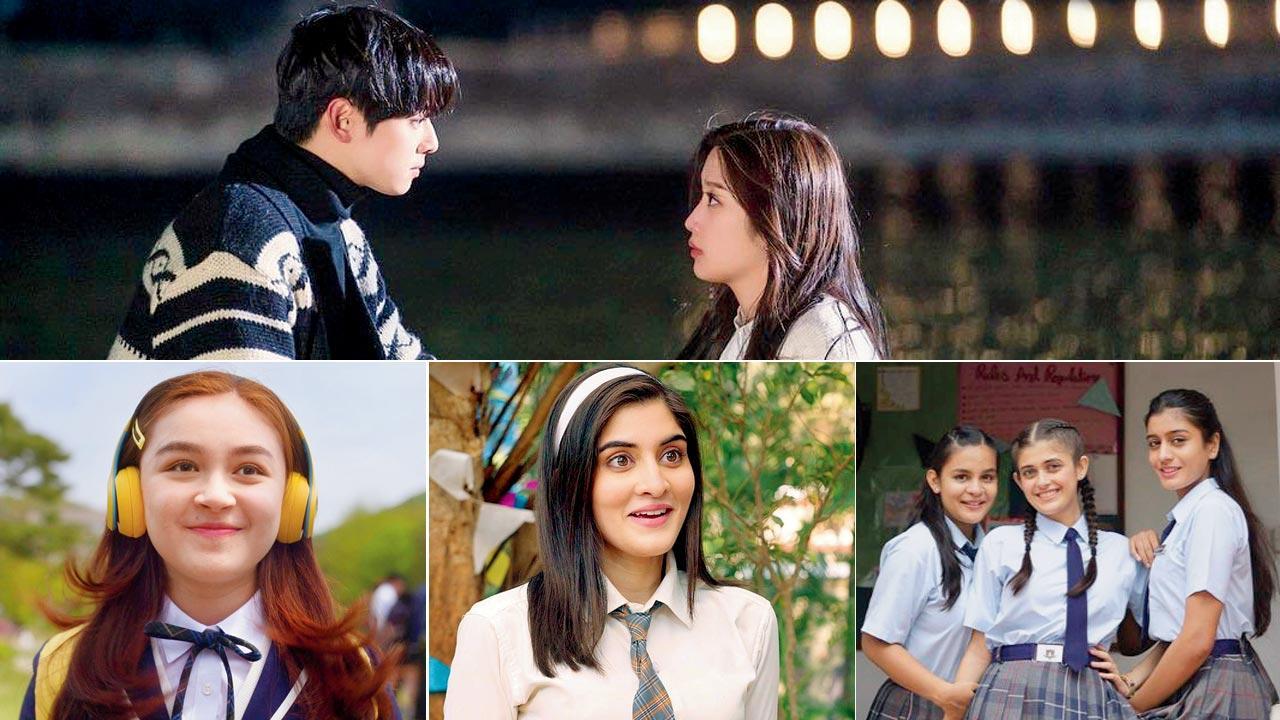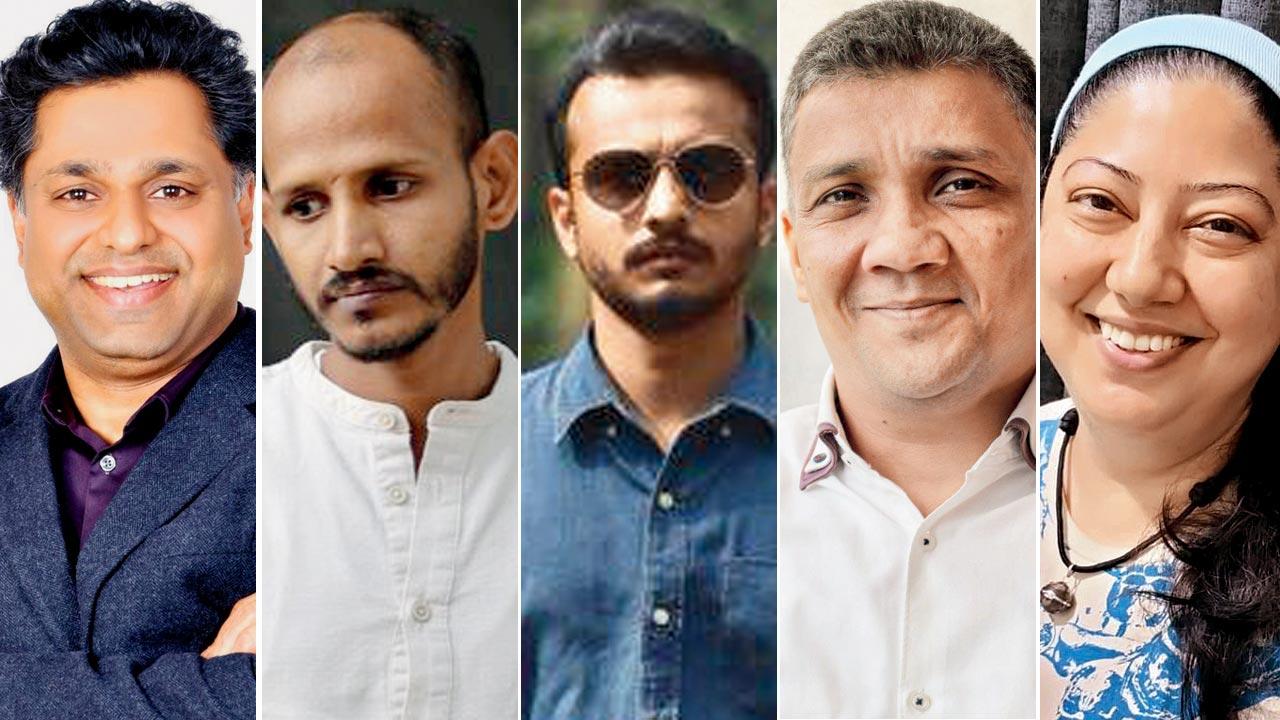What the K-pop craze was to the lockdown, I-dramas are to post-pandemic India. Gen Z viewers are being targeted by web entertainment platforms through content that’s perfect for young angst and shallow attention spans

School Friends and Crushed are among the prominent web series in the Indian young-adult OTT landscape. They have their own defined aesthetics and visuals, presenting the coming-of-age element of adulthood with relatability and nostalgia, like their Western or K-drama counterparts
Ask any 20-something what they’re watching and they’ll rattle off a string of foreign-sounding words, perplexing if one doesn’t know the latest Korean drama in town. It’s not just K-dramas—Gen Zs love watching C-dramas, short for Chinese dramas, and Thai dramas, as well.
ADVERTISEMENT
But there’s a new contender on the horizon, closer home. Digital video and OTT platforms have been in the game for a while. Some of these platforms, like FilterCopy and Dice Media, started off with snappy Instagram and YouTube content but eventually made the shift into producing web series with their own cohorts of influencers and social media stars. The trend of these web series, by and large, is geared towards the angst, romance, and coming-of-age struggles young adults face.
In 2021, Amazon introduced miniTV, a platform for watching short web series—for free—within the app itself. “A majority of the audience who shops on Amazon are young adults. They wanted content for these YA adults,” says Vidyuth Bhandary, the studio head of Dice Media. “That’s why we decided to make content that is extremely relatable to them. It’s content which they can resonate with.”
 Vidyuth Bhandary, Mandar Kurundkar, Sankalp Tripathy, Amogh Dusad and Palki Malhotra
Vidyuth Bhandary, Mandar Kurundkar, Sankalp Tripathy, Amogh Dusad and Palki Malhotra
Crushed is one of the series trending on the platform. Set in Lucknow, it’s a story about the dramatic themes that are so central to youth—love, heartbreak, jealousy. Mandar Kurundkar, the director of the third season, says that shows like these do well because they’re not restricted to the era one grew up in. “I grew up in the 90s, and I’m making stories about Gen Z kids. The emotion of falling in love, that feeling when your crush looks at you for the first time… it’s very universal and resonates across generations.” Kurundkar goes on to explain how these web series appeal to tweens as well as 30-somethings: for tweens, it’s relatable because that’s what going on in their life at the moment. For those past their “firsts”, it’s nostalgia.
“India witnessed a massive change in its value systems, mindsets, and culture post the 1990s,” says Sankalp Tripathy, the creative director of the second season of the series. “But school—and college—are themes that everyone relates to.”
Young adult shows feature social media “influencers”—creators who already were famous and who teamed up with production houses to venture into acting. Can digital platforms be considered to be a launching pad for these aspiring actors? Yes and no. Influencers are often chosen because of their online presence, which ensures viewers will be pulled into watching the series, Bhandary says, but at the same time, fresh faces are chosen because they “fit the character” and personify the relatability for the Gen Z viewers.
Palki Malhotra, the creative producer associated with Campus Beats, another Gen Z-esque show on miniTV, says that social media is “a friend to the youth” and has opened up avenues of self-expression, where personal stories have the capacity to turn into something larger. “They explore themselves right in front of the camera, and the stories reach everyone.”
“Amazon miniTV as a service is focussed on building an engaging platform for 18–34-year-olds across the country, and we see huge traction from this audience set from across 100 cities in the Hindi market where we exist,” says Amogh Dusad, the head of content at AmazonminiTV. He points out that there are a lot of fresh faces debuting from Tier 2 and Tier 3 cities, thus making the platform a place for new talent to showcase their skills. “Technology has made it accessible for talent to showcase their capabilities to people at large, and that’s the reason why you’re seeing a lot of fresh faces coming on the shows.”
The aesthetics of these shows are very Gen Z, very “Instagrammable”. In Campus Beats, the costumes are straight-up fodder for K-drama dreams. The male protagonist, Ishaan, who is played by Shantanu Maheshwari, sports sleeveless photographer’s jackets and crop tops, while Tanvi Gadkari, who plays Rihanna, wears crop tops and bustier blouses. Adulting, a Dice Media series that came out in 2018, had the characters wear typical “Bombay” outfits—oversized tees, casual chic blouses, and ethnic fusion outfits.
Malhotra tells us that the inspiration for the show came from her dream to start a dance school with Maheshwari. “It’s a combination of my imagination, the aesthetics I’d compiled years ago, and what I see working among a Gen-Z audience; the kinds of clothes they’re styling themselves with are pushing boundaries,” she says.
“K-dramas became popular among the youth during the pandemic because we didn’t have a lot of young adult content,” she says. “But if you go back as far as 2011 to 2015, it was a great time for young adults. There were youth channels like MTV, Bindass, or Channel V.” The peak, according to her, happened in 2018, when OTT platforms were gaining a foothold. “My intention is to bring in the I-drama today, because there is a lot of Gen Z content waiting to be explored.”
When compared to the big screen, however, the treatment of young adult content is different. Think young adult, and “college-centric” movies come to mind: Student Of The Year, Dear Zindagi, Jaane Tu Ya Jaane Na, and Kuch Kuch Hota Hai. But these films are a large-scale manifestation of the stories told in more personal ways on OTT. Malhotra says it’s more to do with the budgets of the films, which have the luxury of going as big as they want to go, both with stories and the way of telling them. “So if you look at the aesthetics, they tend to waver, because there’s no time to remain consistent. We’re shooting for content for 17 to 18 minutes a day; it’s four to five minutes for big-screen films,” she explains.
Bigger budgets mean bigger stars, more attention to detail, and hence, more glamorous stories that are made to appeal to the mass audience. But Bhandary has a different take. “It’s because Shah Rukh Khan, Salman Khan, and Aamir Khan are no longer young adults,” he chuckles. “If they were, the scale of the movies meant for young adults would be higher.” In a sense, the actor defines the story; which is why digital video is so “young”.
And then, there’s the experience of watching through different mediums. We hold our phones and watch the series, almost through a personal lens, says Kurundkar, but cinema is at a distance. As you zoom out, the stories get larger, and the people on screen, not so relatable anymore.
 Subscribe today by clicking the link and stay updated with the latest news!" Click here!
Subscribe today by clicking the link and stay updated with the latest news!" Click here!







